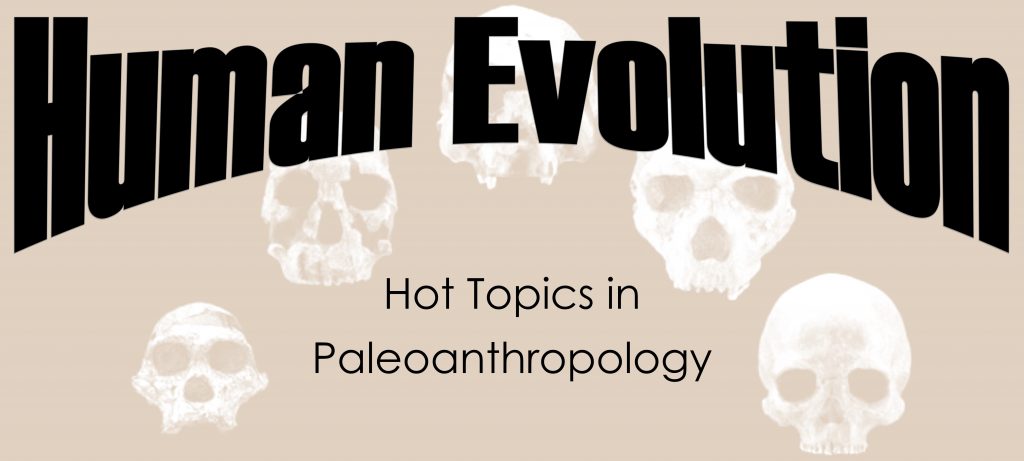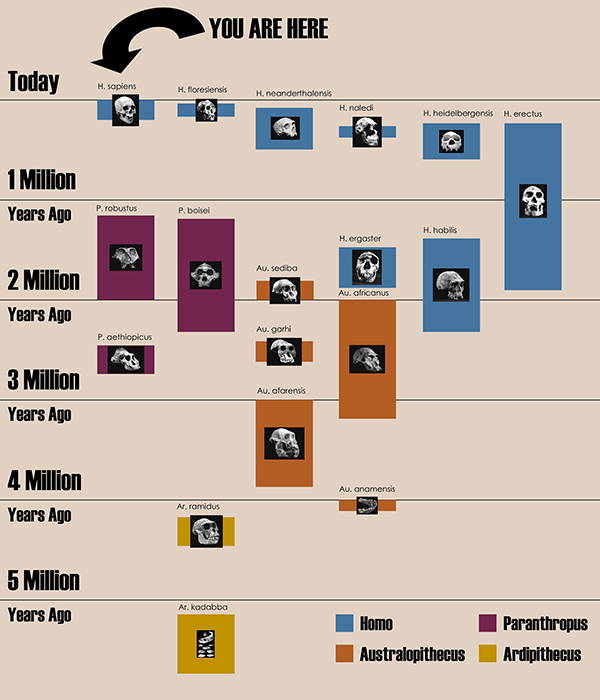Human Evolution: Hot Topics in Paleoanthropology

All humans alive today are members of a single species, Homo sapiens (“Homo” meaning “man”, “sapiens” meaning “wise”). Our species originated only about 200,000 years ago. This sounds like a long time, but actually we are a fairly recent species compared with many other kinds of animals. For example, the African elephant first appeared about 1,500,000 years ago! Despite the short time we have been around, our cultural abilities have allowed us to dominate the planet. We have adapted to every environment on Earth, from extreme heat to extreme cold, and from wet rainforests to dry deserts.
When our lineage first diverged from other apes, about 6-7 million years ago, our pre-human ancestors were much more like chimpanzees and gorillas than like us. What were the lives like of these early species? What was the evolutionary journey like that eventually resulted in us? What were some of the important milestones along the way?
Students at Wake Forest University have been asking themselves these very questions. As part of the “Human Evolution” course, led by Dr. Ellen Miller, students curated this exhibit to highlight exciting areas of new research in paleoanthropology. The focus of this exhibit is not on the things we already know about human evolution, but on the “hot topics” still being investigated.
This exhibit was developed and written by students in the course ANT 366 Human Evolution, led by Dr. Ellen Miller. Exhibit text is based on individual research projects. Dr. Andrew Gurstelle provided additional curatorial support.

Terminology
Researching human origins requires a detailed knowledge of anatomy, geology, and ecology. Each of these sciences has its own specialized vocabulary for talking about arguments, evidence, and interpretations of the fossil record. Below are some key terms used by anthropologists in discussing human evolution:
Paleoanthropologist – Someone who uses fossils, tools, and other ancient remains to study the development of modern humans.
Fossil – The preserved remains or impressions of a once-living thing, usually created when an organism is buried, soaked in water, and slowly dissolved.
Taxonomy – A system of classifying living things based on how closely related they are. In scientific classification, most people are familiar with genus and species. A genus (plural: genera) is grouped based on a shared physical features and evolutionary history. A species is the most specific grouping, and refers to organisms similar enough to interbreed.
Hominin – An organism belonging to the related genera of Homo, Australopithecus, Paranthropus, or Ardipithecus, representing the human lineage that diverged from our most recent common ancestor with chimpanzees.
Morphology – The structure, appearance, or other properties of an organism’s physical traits. When discussing evolution, traits are often described as primitive or derived. Primitive traits are those that were inherited from earlier genera or species, while derived traits are those that have newly developed.
